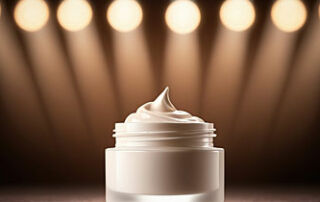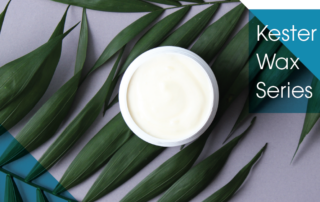Water in Oleogel Technology
What Is A Water-In-Oleogel Emulsion?
Download BrochureA water-in-oleogel emulsion is a moderately complex system, with properties dictated by both water-in-oil emulsion theory, as well as oleogel theory.
Products
Formulas
What are the benefits of a water-in-oleogel emulsion in personal care?
- Incorporation of both water and oil soluble actives.
- Increased emulsion stability.
- Flexibility: multiple levels of structure are possible.
- Innovative, interesting textures.
- Benefits of oil based formulas without the greasy feel.
- Possible cooling effects on skin.
- Sticks and other “on-the-go” formats.
What are the sensory benefits of a water-in-oleogel emulsion?
Because of this hybrid nature, w/og emulsions can offer both the positive sensory benefits of w/o emulsions as well as of anhydrous formulations. In a sensory panel, participants were presented with a trio of skin care formulations: a standard w/o emulsion, a structured w/o emulsion and an anhydrous balm, all based on the same formula backbone. Panelists were asked to rate and describe the sensory properties.
The sensory panel results show an overwhelming preference towards the structured w/o format, as well as a wider range of sensory/texture descriptors when compared to the corresponding w/o emulsion and anhydrous balm.
Overall format performance
initial observations and hypothesis
The addition of waxes in increasing levels to the oil phase of w/o emulsions (external phase) show very different results than those observed when adding waxes to the oil phase of o/w emulsions (internal phase). Those results are consistent with our observations when working with oleogels. Our theory is that if there is a direct correlation between the structural properties of w/og systems and their og counterparts, all tools and techniques chemists use when working with anhydrous systems can be applied to working with structures w/o systems.
objectives
- Create oleogel (og) charts showcasing the structuring properties of different waxes in different oil mediums.
- Create water-in-oleogel (w/og) charts: Replicate #1, but with 50% water phase dispersed internally using an appropriate w/o emulsifier.
- Compare charts from #1 and #2 and determine any relationships. If they exist, test our theory on complex formulas and provide formulators with the tools and guidance to create their own systems.
oleogels theory and gel charts
Oleogels (og) are viscoelastic materials comprising a nonpolar liquid phase (the oil) and a gelator or mix of gelators, very typically waxes. Waxes immobilize the lipid phase through the formation of three-dimensional networks, resulting in systems of varying consistencies and firmnesses, largely dependent on the amount of wax used.
This oleogel firmness or strength can be measured with a penetrometer and recorded on a gel chart, a tool that can organize gel strength data in a meaningful way and save a lot of trial-and-error time. Gel charts published here were built by plotting penetration distance on the y-axis vs. % wax on the x-axis for each individual gel following the simple formula:
[…]






